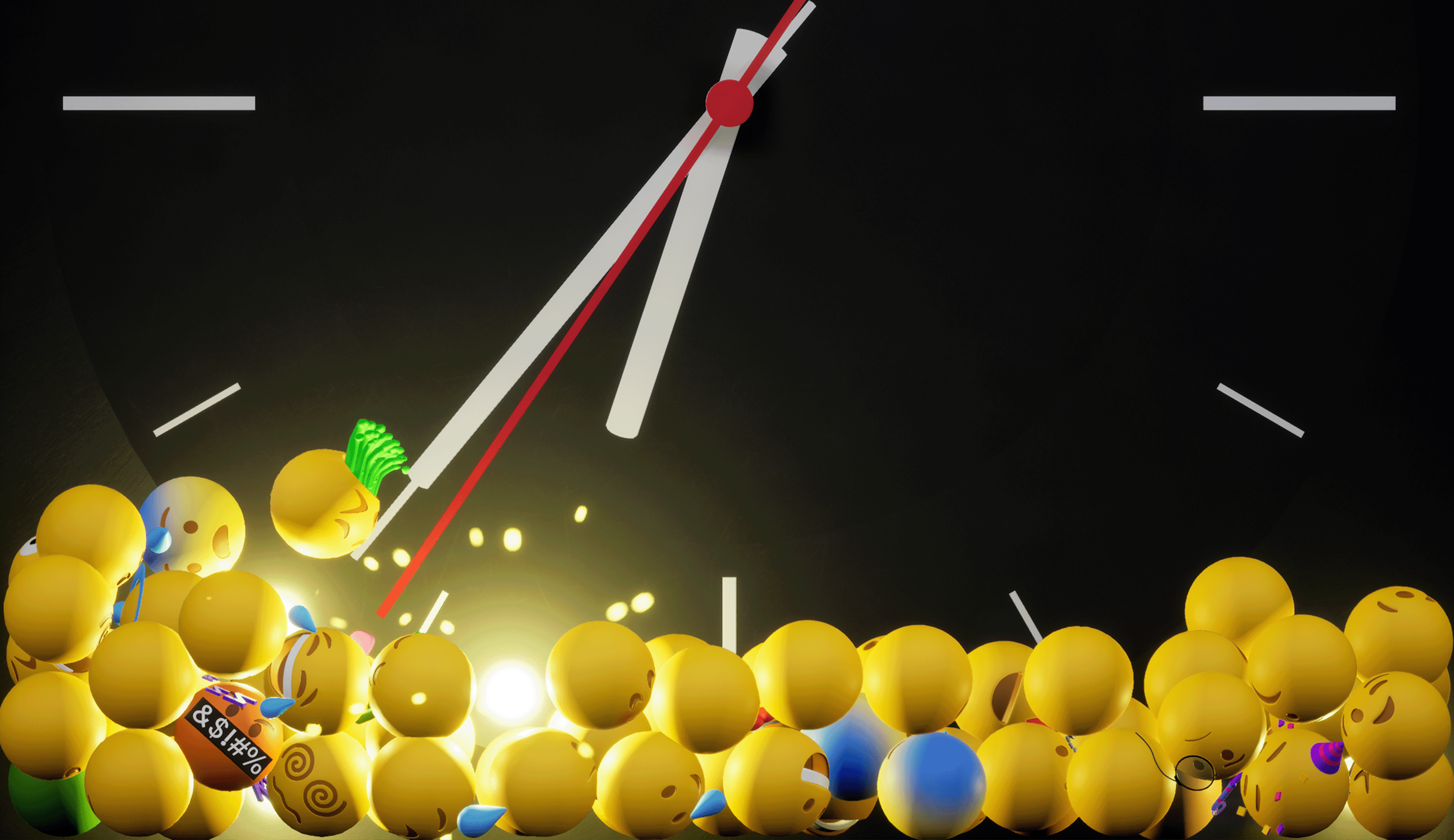Daniel McKewen
Kairos
Meanjin/Brisbane, QLD, Australia
About
Kairos is an oculo-chrono-metric artwork, a seeing clock that combines computer vision and real-time animation to react to viewers in the gallery. With this ability, instead of telling time, Kairos destabilises its own utility as a temporal instrument. It creates a different register of time as it responds to being seen with a cascade of playful emoji ‘complications’ which reconfigure the clock’s function.
The artwork’s key attribute is that it is endowed with computer vision (CV); it is a clock with the ability to ‘see’ and react to ‘being seen’. When Kairos detects the face of a viewer it responds by releasing an emoji ‘complication’ from offscreen, a reaction that continues as long the viewer keeps watching the clock. These emoji impact upon and bounce off the simulated hands of the analogue clockface and change the time displayed. As fragments of an ever-evolving digital language, these emoji are symbolic of how our time, communication, and attention is abstracted, distracted, and extracted in our complicated always-online lives. But in the field of horology (the study of measuring time and making timekeeping devices), a ‘complication’ is any additional feature of a clock beyond its display of hours, minutes, and seconds. So in Kairos, the emojis have multiple meanings and functions; they are complications that represent and record our viewing time, but in doing so complicate the clock’s ability to tell another time, and ultimately our ability to read either time. Piling up within the digital clockface, the emojis eventually seize the clock’s mechanism entirely, creating a record of an extended viewing interaction. As long as this seeing continues, the clock will continue to fail, with new emojis appearing even as others burst and disappear. However, once the viewer moves away, the ‘unseen’ clock will return to the ‘correct time’, waiting to see a new face and begin the process again.
Installed as a free-standing artwork, rather than a wall-hung screen, Kairos references the scale of a human body. Occupying the gallery space with its clockface at face-height, the work prompts a consideration of the embodied subjectivity of quantitative clock-time (chronos). Its responsive qualities go further, creating an opportunity to consciously recognise our experience of time in qualitative and even somatic terms; as an emergent moment of kairos.
As a ‘seeing clock’, Kairos reflects on an array of epistemological and ontological questions. As a measurement device rendered unreliable through observation, the work gives creative form to ideas from the world of physics; quantum mechanics and the observer effect, Einstein’s relativity and time dilation, Heisenberg’s uncertainty principle, and the Copenhagen interpretation. At the same time, through its use of CV face-tracking software to drive real-time digital screen animation, the work also responds to the work of myriad writers and artists including Shoshana Zuboff, Jonathan Crary, James Bridle, and Jenny Odell. These voices critique the attention economy’s extractive exploitation of time, examining the socio-economic conditions and technologies that fuel Surveillance Capitalism. In Kairos, this critique operates in the complex interplay between seeing, reading, knowing, and feeling time – creating an awareness of our otherwise-unconscious conceptions of temporal objectivity and drawing attention to the subjective and alienating experience of digitised temporality.
Credits
Artist: Daniel McKewen
Real-time animation technician: Guy Lobwein
An Experimenta Commission
Curator’s note
Recent (2024) study proposed a new approach: viewing time as an emergent consequence of quantum entanglement rather than a fundamental aspect of the universe. While yet to be a testable proposition this, quantum scale ground-up approach may offer a promising place to start.
“Time may not be a fundamental element of the universe but rather an illusion emerging from quantum entanglement.” 1
1 Turner, B (2024). Time might be a mirage created by quantum physics; study suggests. Live Science.
Research
Coppo, A., Cuccoli, A., Verrucchi, P. (2024). Magnetic clock for a harmonic oscillator. Physical Review A, Volume 109 (issue 5) Article 052212.

The Artist
Daniel McKewen
Daniel McKewen is a visual artist and educator, whose practice investigates the intersections of art, screen culture, economics, and politics.

